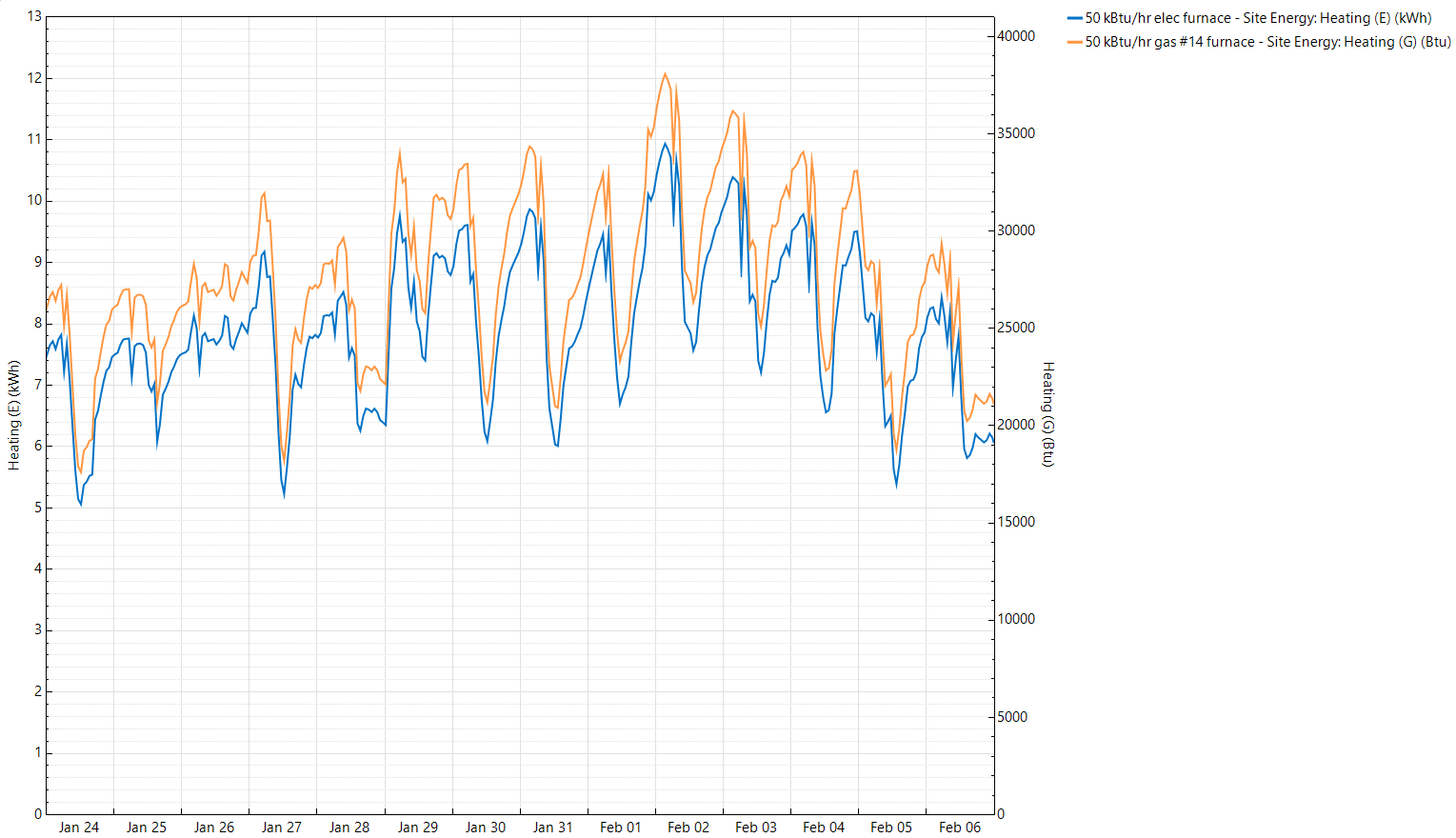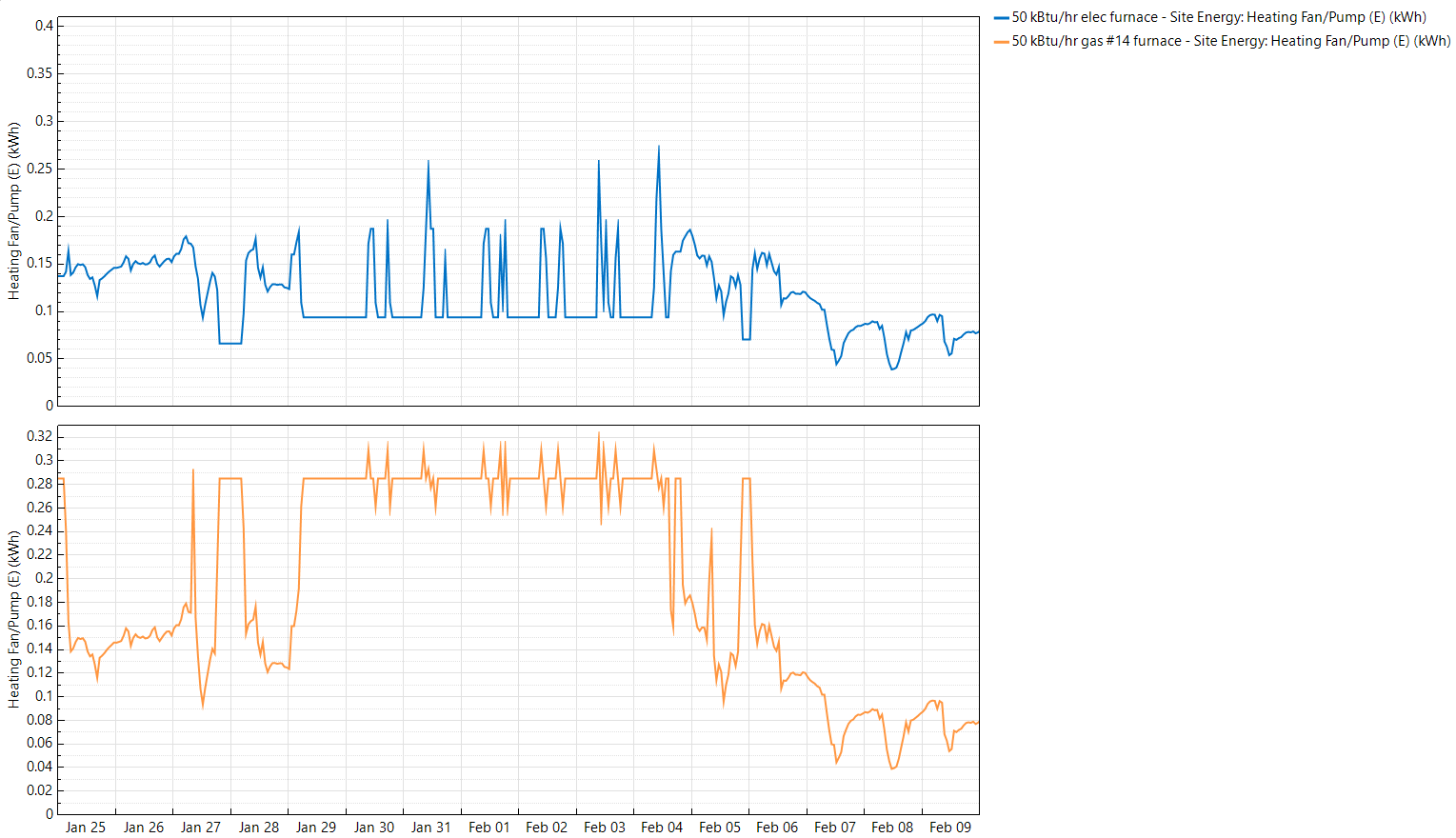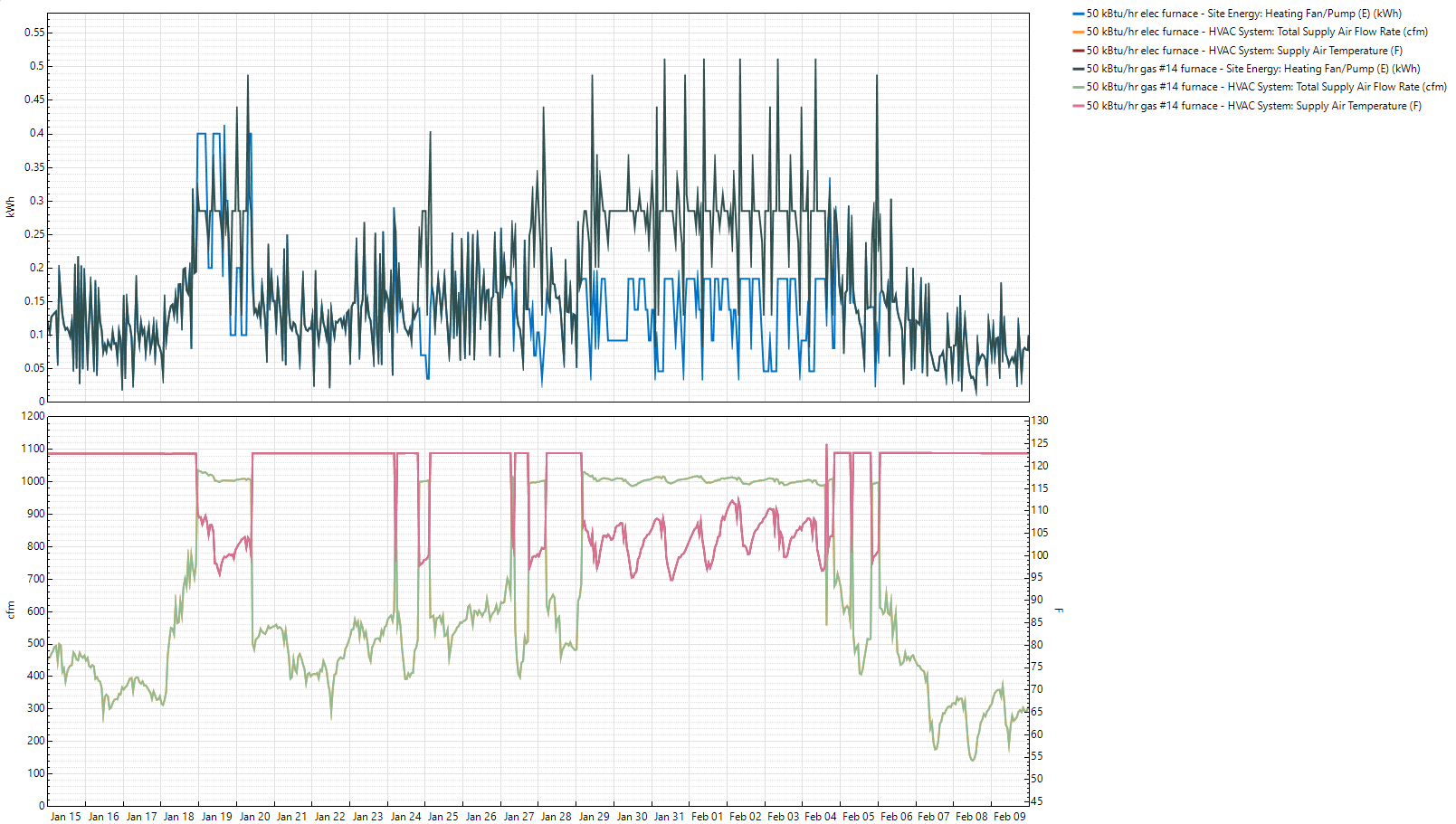First time here? Check out the Help page!
 | 1 | initial version |
No problem. Are you sure you are looking at the right data? Because for me it looks different. Attached you can see the heating loads (kWh & Btu) for the electric and gas furnace based on the site energy use. The only load pattern that is significantly different between these two cases is the Heating Fan/Pump activity, which totally makes sense. Attached you can also see the corresponding graph. As you can see, it never stops working during this period. You can also double check to see if a proper simulation engine is selected under the 'settings' just to make sure the E+ you are using is not a modified version.
Please double check what boxes you have checked in DView and let me know if you are still experiencing the same issue.


 | 2 | No.2 Revision |
No problem. Are you sure you are looking at the right data? Because for me it looks different. Attached you can see the heating loads (kWh & Btu) for the electric and gas furnace based on the site energy use. The only load pattern that is significantly different between these two cases is the Heating Fan/Pump activity, which totally makes sense. Attached you can also see the corresponding graph. As you can see, it never stops working during this period. You can also double check to see if a proper simulation engine is selected under the 'settings' just to make sure the E+ you are using is not a modified version.
Please double check what boxes you have checked in DView and let me know if you are still experiencing the same issue.


Update: If you look at the 'Delivered Energy', as you also pointed out, the dropouts occur when there is an anomaly in 'Heating Fan/Pump' energy use. However, based on the outputs shown below, the 'Total Supply Air Flow Rate' and 'Supply Air Temperature' is identical for both cases. It means that the fan is adjusting its power to keep the flow rate under a certain level (about 1000 cfm in this case). Basically, these dropouts occur when the supply air temperature drops and supply air flow reach its maximum. Then, the electric furnace stops delivering heat (delivered energy is the heating energy delivered to space by HVAC). Something that I couldn't figure out is the difference between electric and gas furnace in terms of systems' properties. I checked the IDF files generated by BEopt and both systems look identical, which doesn't help with explaining the difference in their behavior.

